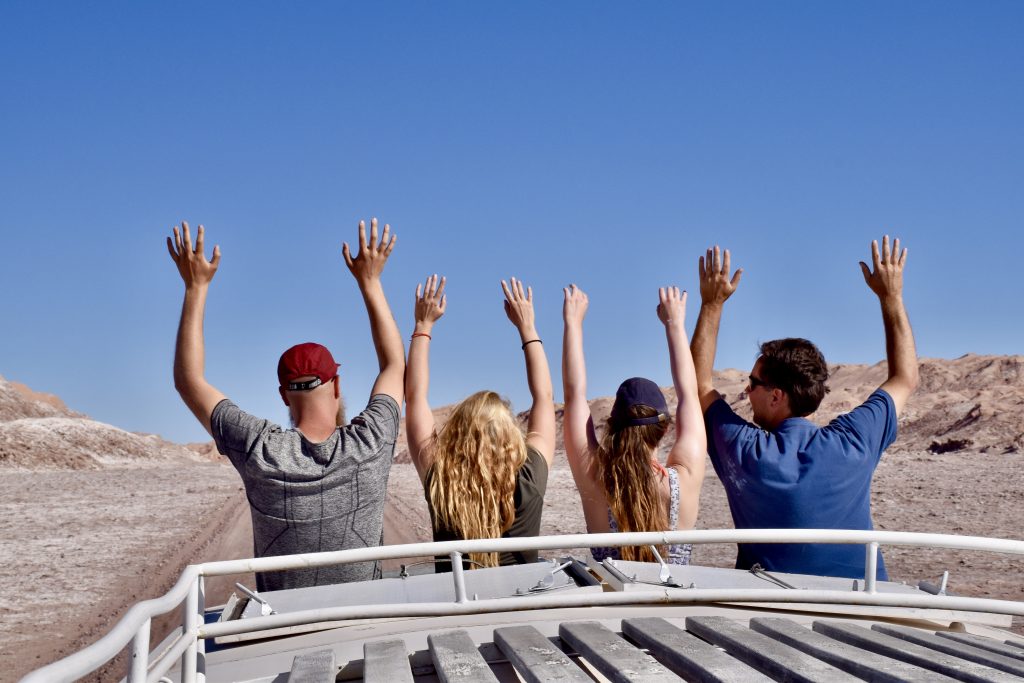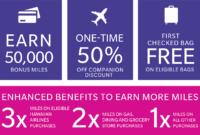Travel tour companies for singles are revolutionizing the solo travel experience, offering curated itineraries and opportunities for connection. These companies cater specifically to the needs and desires of independent travelers, addressing concerns about safety and loneliness while providing engaging activities and unique experiences. From adventurous expeditions to relaxing beach getaways, the options are diverse and cater to a wide range of budgets and preferences, ensuring a memorable and fulfilling journey for every single traveler.
The market for single traveler tours is growing rapidly, driven by increased disposable income, a desire for personal exploration, and the convenience of pre-planned itineraries. Understanding the specific needs and preferences of this demographic is crucial for tour operators seeking to tap into this lucrative market segment. This includes offering a variety of tour types, from adventure-packed treks to relaxing cultural immersion experiences, and providing personalized services to ensure a positive and safe travel experience.
Understanding the Target Audience
The singles travel market represents a significant and growing segment within the tourism industry. Understanding the demographics, motivations, and expectations of this audience is crucial for crafting successful and appealing travel packages. This section delves into the characteristics of solo travelers interested in organized tours, providing insights into their preferences and travel patterns.
Demographics of Solo Travelers on Organized Tours
The demographic profile of solo travelers booking organized tours is diverse, but certain trends emerge. While age is a significant factor, it doesn’t define the entire market. We see a notable increase in younger adults (25-35) seeking adventure and cultural immersion, balanced by a substantial number of mature travelers (55+) prioritizing relaxation and comfort. The gender split is relatively even, with a slight skew towards female travelers in certain niche markets like wellness retreats. Education levels tend to be higher than average, reflecting a disposable income that allows for travel experiences. Professionally, the group is varied, ranging from entrepreneurs and freelancers to professionals in established careers.
Motivations and Travel Styles of Solo Travelers
Solo travelers on organized tours are driven by a variety of motivations. Many seek to overcome feelings of isolation or to step outside their comfort zones. The structured nature of organized tours offers a sense of security and community, while simultaneously allowing for independent exploration. Common motivations include personal growth, cultural discovery, adventure, relaxation, and the opportunity to meet new people. Travel styles vary widely, from adventurous backpacking trips to luxurious cruises and wellness retreats. The common thread is the desire for a fulfilling and enriching experience, often with a focus on specific interests like photography, history, or gastronomy.
Budget Range and Expectations for Single Traveler Tours
Budget expectations are highly variable and directly correlate with the chosen travel style and destination. Budget-conscious travelers may opt for hostel-based adventure tours or budget-friendly group trips, while others are willing to invest in higher-end experiences with luxury accommodations and exclusive activities. Expectations generally include well-organized itineraries, comfortable accommodations (that match the budget level), engaging activities, opportunities for socializing, and knowledgeable guides. Single supplements are a significant factor, and transparency regarding these costs is crucial to build trust and manage expectations.
Single Traveler Tour Profile
| Age Range | Preferred Destinations | Travel Style | Budget Level |
|---|---|---|---|
| 25-35 | Southeast Asia, South America, Europe (backpacking destinations) | Adventure, Cultural Immersion | Budget to Mid-Range |
| 35-55 | Europe (city breaks), Caribbean, Mediterranean | Relaxation, Culture, Gastronomy | Mid-Range to High-Range |
| 55+ | National Parks (USA/Canada), Cruise destinations, European river cruises | Relaxation, Sightseeing, Comfort | Mid-Range to Luxury |
| All Ages | Japan, Iceland, Costa Rica | Adventure, Nature, Wellness | Mid-Range to Luxury (depending on specific activities) |
Marketing and Promotion Strategies
Reaching single travelers requires a targeted approach that acknowledges their unique travel motivations and preferences. Effective marketing hinges on understanding their desires for connection, adventure, and independence, all while ensuring safety and a well-organized experience. This necessitates a multi-pronged strategy utilizing both online and offline channels.
Effective marketing strategies for reaching single travelers interested in organized tours involve a blend of digital marketing, public relations, and strategic partnerships. It’s crucial to highlight the social aspects of the tours, emphasizing opportunities for meeting like-minded individuals and forging new friendships. Simultaneously, the itineraries should appeal to individual interests, offering a range of activities and experiences to cater to diverse preferences. Furthermore, building trust and credibility is paramount, particularly within a demographic that may be hesitant about traveling alone.
Leveraging Social Media and Online Platforms
Social media and online platforms offer unparalleled opportunities to connect with single travelers. Utilizing targeted advertising on platforms like Facebook, Instagram, and even TikTok allows for precise demographic targeting based on age, interests, relationship status, and travel history. Visually appealing content, showcasing stunning travel destinations and the social dynamics of past tours, is crucial. Running contests and giveaways can generate excitement and engagement, while interactive polls and Q&A sessions can foster a sense of community and build anticipation. Furthermore, collaborating with travel influencers who cater to the solo traveler niche can significantly expand reach and build credibility. For example, a campaign could partner with a travel blogger known for their solo adventures, featuring them on a tour and sharing their experiences across their social media channels. This authentic endorsement carries significant weight with potential customers.
The Importance of Testimonials and Reviews
Testimonials and reviews from previous single travelers are invaluable assets. They provide authentic social proof, addressing potential concerns about safety, social interaction, and overall experience. These reviews act as powerful persuasion tools, showcasing the positive experiences of others and encouraging potential customers to take the leap. Featuring testimonials prominently on the website, in marketing materials, and across social media platforms is essential. Consider creating short video testimonials, allowing past travelers to share their personal stories and highlight the unique benefits of traveling solo with the tour company. For example, a video featuring a single woman who made lifelong friends on a tour to Italy could resonate strongly with other women considering a similar trip. Encouraging reviews on platforms like TripAdvisor and Google Reviews further amplifies the positive feedback and boosts the company’s online reputation.
Sample Marketing Campaign Plan
A successful marketing campaign needs a clear objective, target audience, and a defined set of activities. Consider a campaign centered around the theme “Discover Your Independence: Solo Travel Adventures.” This campaign could leverage high-quality photography and videography showcasing the beauty of the destinations and the social interactions amongst participants on past tours. The campaign could be launched across multiple platforms, including social media, email marketing, and partnerships with relevant travel blogs and websites. The campaign would feature testimonials from past single travelers, highlighting their positive experiences and the friendships they forged. Targeted advertising on social media would focus on single individuals aged 30-55 with an interest in adventure travel, utilizing specific keywords and interests to reach the ideal customer profile. The campaign could also incorporate a contest or giveaway, offering a free tour to one lucky participant, to generate excitement and increase engagement. This comprehensive approach combines various marketing strategies to effectively reach and resonate with the target audience of single travelers.
Challenges and Opportunities in the Market
The singles travel market presents unique challenges and exciting opportunities for tour operators. Successfully navigating this niche requires a keen understanding of the target audience’s needs and desires, coupled with innovative strategies to address specific concerns and capitalize on emerging trends. Failure to address these challenges can lead to dissatisfied customers and ultimately, business failure. Conversely, embracing the opportunities can lead to significant market share and profitability.
One of the primary hurdles is managing the complexities inherent in catering to solo travelers. This includes logistical challenges like managing single supplements (the extra cost incurred by individuals traveling alone in rooms typically designed for two), balancing group dynamics to ensure everyone feels included and comfortable, and proactively addressing safety concerns. Furthermore, marketing effectively to this demographic requires a nuanced approach that resonates with their specific motivations and expectations.
Managing Single Supplements and Group Dynamics
Single supplements represent a significant operational challenge. These are unavoidable costs that can make solo travel significantly more expensive. Tour operators must find creative solutions, such as offering shared room options with carefully matched roommates (with clear communication about preferences and expectations), or designing itineraries with flexible rooming arrangements. Successfully managing group dynamics involves careful pre-trip communication, fostering a welcoming and inclusive environment through planned activities and opportunities for interaction, and training guides to be sensitive to the unique needs of solo travelers. For example, incorporating icebreaker activities at the beginning of the tour can help build rapport among participants.
Addressing Safety Concerns and Enhancing Trust
Safety is paramount for solo travelers. Tour operators should implement robust safety protocols, including 24/7 emergency contact numbers, regular check-ins, and clearly communicated safety guidelines. Building trust requires transparency and open communication. This includes clearly outlining the itinerary, costs, and any potential risks, and providing readily accessible contact information for both the tour guide and the company’s customer service team. For example, providing a detailed safety guide that includes local emergency numbers and advice on safe travel practices can reassure solo travelers. Regular updates and communication throughout the tour can further enhance trust.
Opportunities for Growth and Technological Innovation
The singles travel market offers considerable growth potential. An increasing number of people, particularly millennials and Gen X, are choosing to travel solo, driven by a desire for personal growth, adventure, and flexibility. Technology plays a crucial role in enhancing the experience. Dedicated mobile apps can provide real-time itinerary updates, facilitate communication among travelers, offer personalized recommendations, and provide access to emergency services. For example, an app could feature a built-in messaging system allowing travelers to connect with each other before, during, and after the tour, fostering a sense of community.
Building Community and Fostering Connections
Building a sense of community among single travelers is key to a positive experience. This involves creating opportunities for social interaction through planned group activities, such as cooking classes, wine tasting, or hiking excursions. Pre-trip communication can also help facilitate connections by allowing travelers to connect with each other before the tour begins. The tour guides themselves play a critical role in fostering a welcoming and inclusive atmosphere. Their ability to engage with participants, facilitate conversations, and address any concerns is vital in creating a positive and memorable experience. For instance, incorporating social events into the itinerary that cater to various interests can help to break down barriers and encourage interaction among participants.
Final Conclusion
Ultimately, the success of travel tour companies catering to singles hinges on understanding their unique needs and providing a safe, engaging, and fulfilling travel experience. By offering diverse tour options, prioritizing safety measures, fostering a sense of community, and leveraging effective marketing strategies, these companies can continue to grow and thrive in this dynamic market. The future of solo travel is bright, promising countless opportunities for personal growth and unforgettable adventures.




